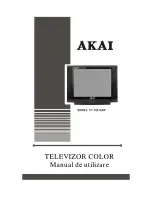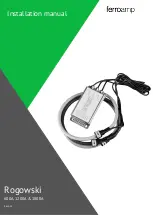
ii
PRECAUTIONS
R
WARNING! NEVER
connect the transceiver to an
AC outlet. This may pose a fi re hazard or result in an electric
shock.
NEVER
connect the transceiver to a power source of more
than 27.6 V DC. This will damage the transceiver.
NEVER
connect the transceiver to a power source using
reverse polarity. This will damage the transceiver.
NEVER
cut the DC power cable between the DC plug and
fuse holder. If an incorrect connection is made after cutting,
the transceiver may be damaged.
NEVER
expose the transceiver and microphone to rain,
snow or any liquids. The transceiver and microphone may
be damaged.
NEVER
operate or touch the transceiver and microphone
with wet hands. This may result in an electric shock or dam-
age the transceiver and microphone.
NEVER
place the transceiver where normal operation of the
vehicle may be hindered or where it could cause bodily injury.
DO NOT
push the PTT when not actually desiring to transmit.
DO NOT
allow children to play with any radio equipment
containing a transmitter.
OPERATIONAL NOTES
vii. UHF CB repeaters provide greater range through a base
station that re-transmits signals. Repeaters operate util-
ising two channels (repeater input/repeater output). It is
important to avoid operation on locally used repeater in-
put channels (which will be in the channel range 31 to 38
and 71 to 78, when they are authorised) or locally used
repeater receiving channels (in the channel range 1 to 8
and 41 to 48, when they are authorised), unless long dis-
tance communication via the repeater facility is specifi cally
required. See the section on repeater operation for more
information.
iix. Please be aware that the UHF CB network may experi-
ence possible operational issues during the changeover to
narrowband. This transceiver operates on 12.5 kHz chan-
nel spacing. During the changeover period from 25 kHz to
12.5 kHz spacing, there may be some loss of quality when
12.5 kHz (narrowband, 2.5 kHz deviation) transmissions
are received on 25 kHz (wide band, 5.0 kHz deviation)
equipment, and vice-versa. There may also be interfer-
ence due to older equipment being operated on channels
adjacent to new narrowband channels, as the channel set-
ting on these may cause some ‘overlap’. A list of currently
authorised channels can be found on the ACMA website
(Australia) and on the MED website in New Zealand.
Summary of Contents for IC-440N
Page 1: ...INSTRUCTION MANUAL i440N UHF TRANSCEIVER ...
Page 56: ...Cut here ...
Page 59: ...MEMO Cut here ...
Page 60: ...MEMO ...




































